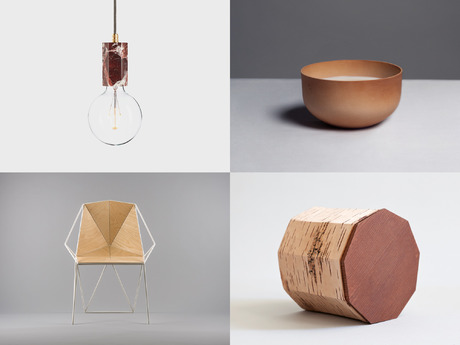
CCA Zarya’s exhibition «Materialization» brings together objects by 23 Russian designers and studios
On April 18, the Zarya Center for Contemporary Art unveils its latest exhibition, «Materialization», which features fifty objects from twentythree young Russian designers and studios. In addition to introducing a wider publicto Russia product design, theshow seeks to weave the Far East region into the fabric of the co untry’s professional co mmunity, offering designers a platform for research into the local resources and traditional techniques of the region. The exhibition will be on view through September 17, 2017.
The objects presented within this exhibition are crafted from the most widely-used materials in contemporary Russian practice: wood, metal, stone and ceramics. Exhibition curator Tatiana Kudryavtseva proposes looking at this choice of materials as more than just the consequence of the limitations faced by the industry in Russia. In laying out the history of how these materials have been used to embody creative concepts, the exhibition touches on themes of the ecology of one’s immediate environment, mindful consumption, the ethical use of resources, and the revival of traditional techniques and local crafts. Dedicated to Russia artists working within the mold of «designer-entrepreneurs», the exhibition explores the blending of two distinct approaches to design: design as the manufacturing of serial objects, and design as the practice of producing handcrafted goods. Knowledge of the specific properties of the materials and the ability to uncover their potential are critical aspects in transforming a concept into a quality product with its own unique look and feel. At the same time, the modern take on traditionaltechniques (like, for instance, working with birchbark or dairy-glaze ceramics) invests concepts with a functional purpose. This show gathers together smaller-scale furniture pieces, lighting fixtures, accessories and tableware, with the overall exhibition design developed by St Petersburg-based architects, Rhizome.
Wood, metal, stone and ceramics are four fundamental materials used by contemporary Russian product designers. In many ways their popularity is only logical: unlike hightech materials, they are easily accessible and designers in Russian know how to work with them. Over the past five to seven years, Russia has witnessed the rise of a series of notable young artists, who are not only actively participating in professional events on an international level, but — perhaps more importantly — whose works exist not only as concepts, but as actual realized objects. Given that a modern industry oriented towards the production of designer objects still has yet to take hold in Russia, the successful «materialization» of design concepts requires designers to develop the skills of an organizer and entrepreneur all in one. Objects are manufactured with the help of special studios, capable of producing limited-edition series of quality items. Several designers have even launched their own production.
At the same time, the use of traditional materials falls in line with one of the most predominant world trends in contemporary design. For those in search of «lost values» — life in moderation, harmonious coexistence with one’s environment, ecological mindfulness — the natural materials offer a counterbalance to the ubiquity of contemporary technology, which is ephemeral in nature. The recent swell of ecological consciousness incentivizes the use of materials derived from renewable resources and produced without generating harmful waste. These objects bear the stamp of personal labor, eliciting a stronger sense of ownership, which means they are also less likely to be thrown out, taking a meaningful step in the direction of mindful consumption. Within this appeal to «materiality» and mastery, particular interest is paid to the study of traditional craft. Contemporary design breathes new life into these practices, while simultaneously enriching its own expressive vocabulary, as well as our everyday material culture, reasserting local identity against the backdrop of the homogeneity of our ever-growing globalism.